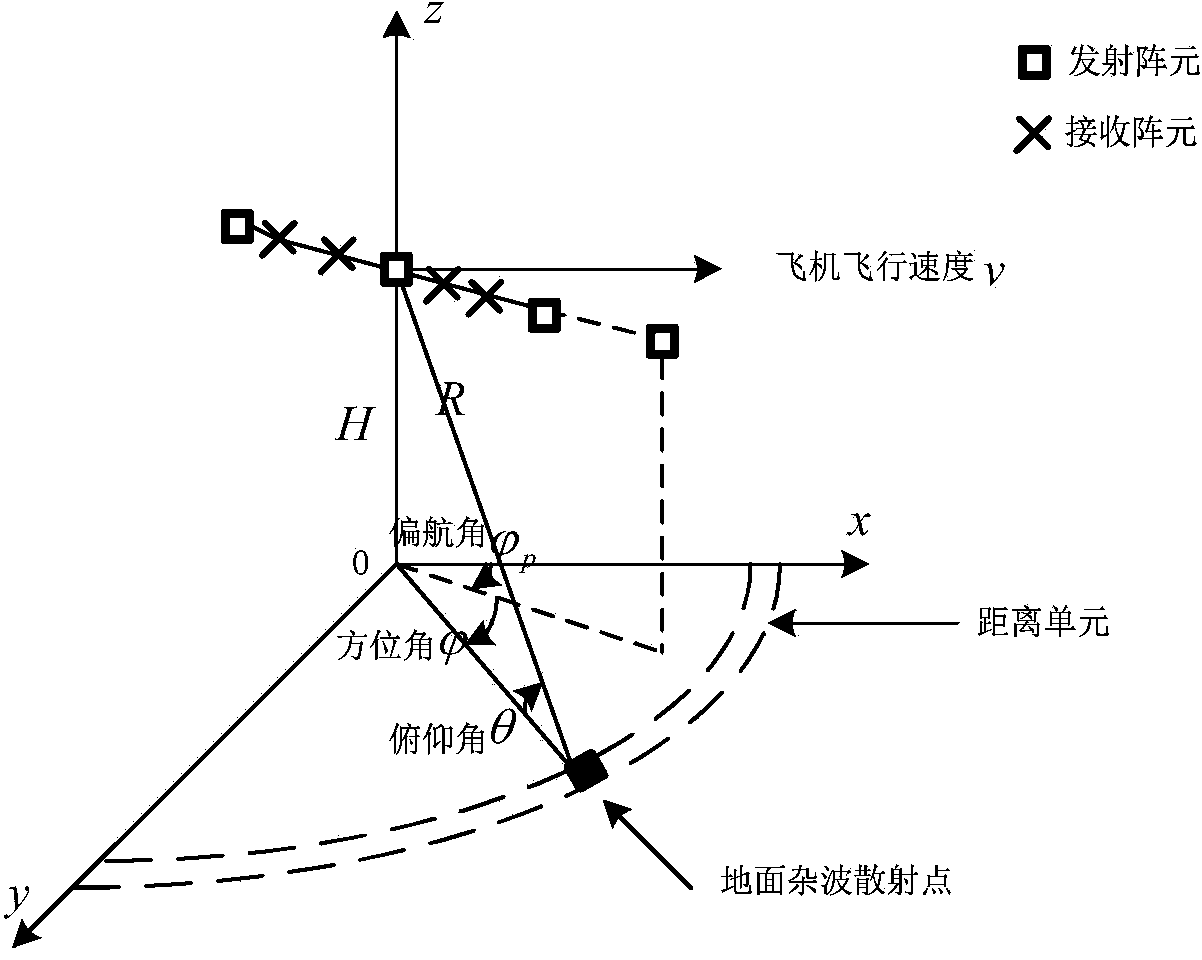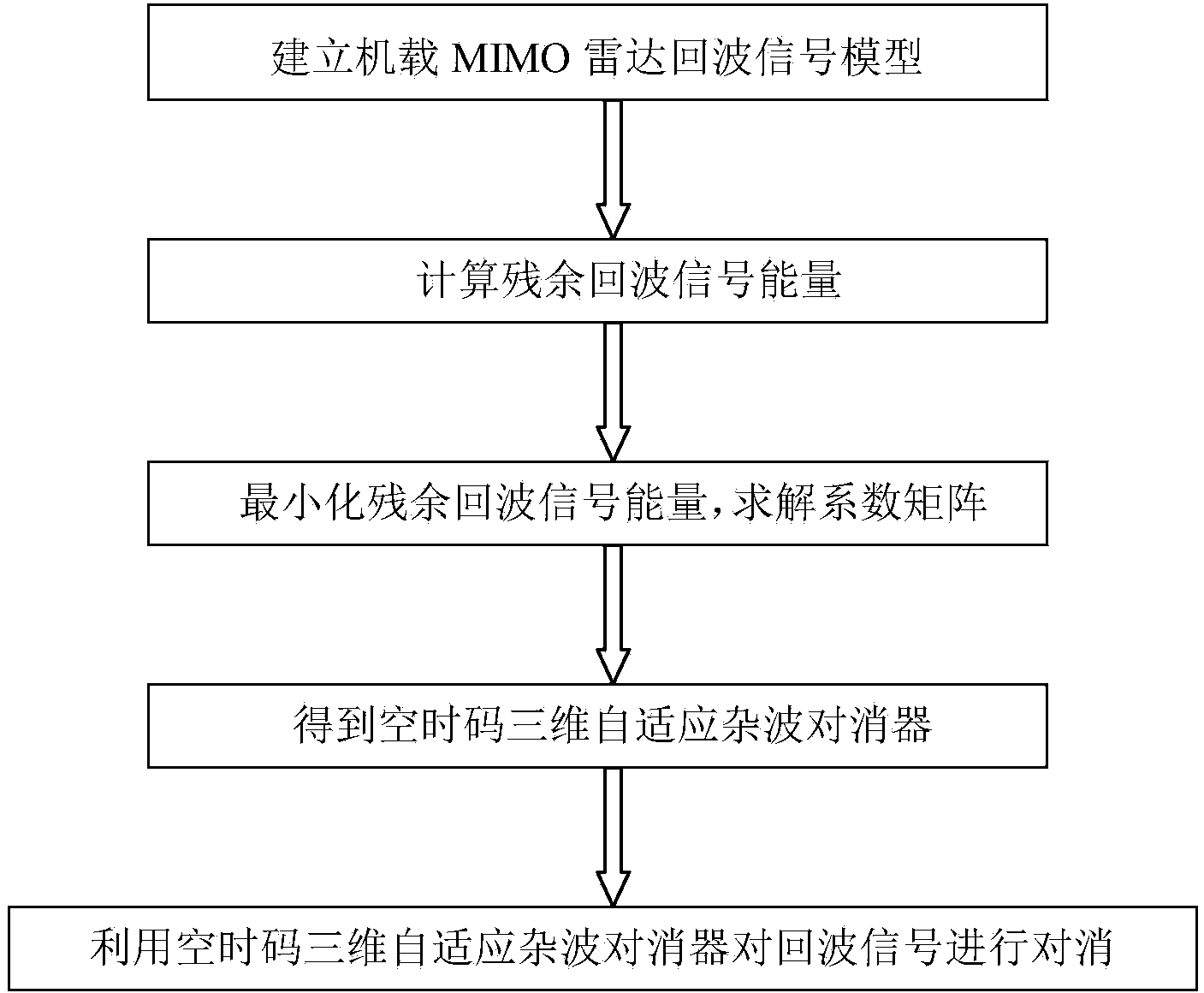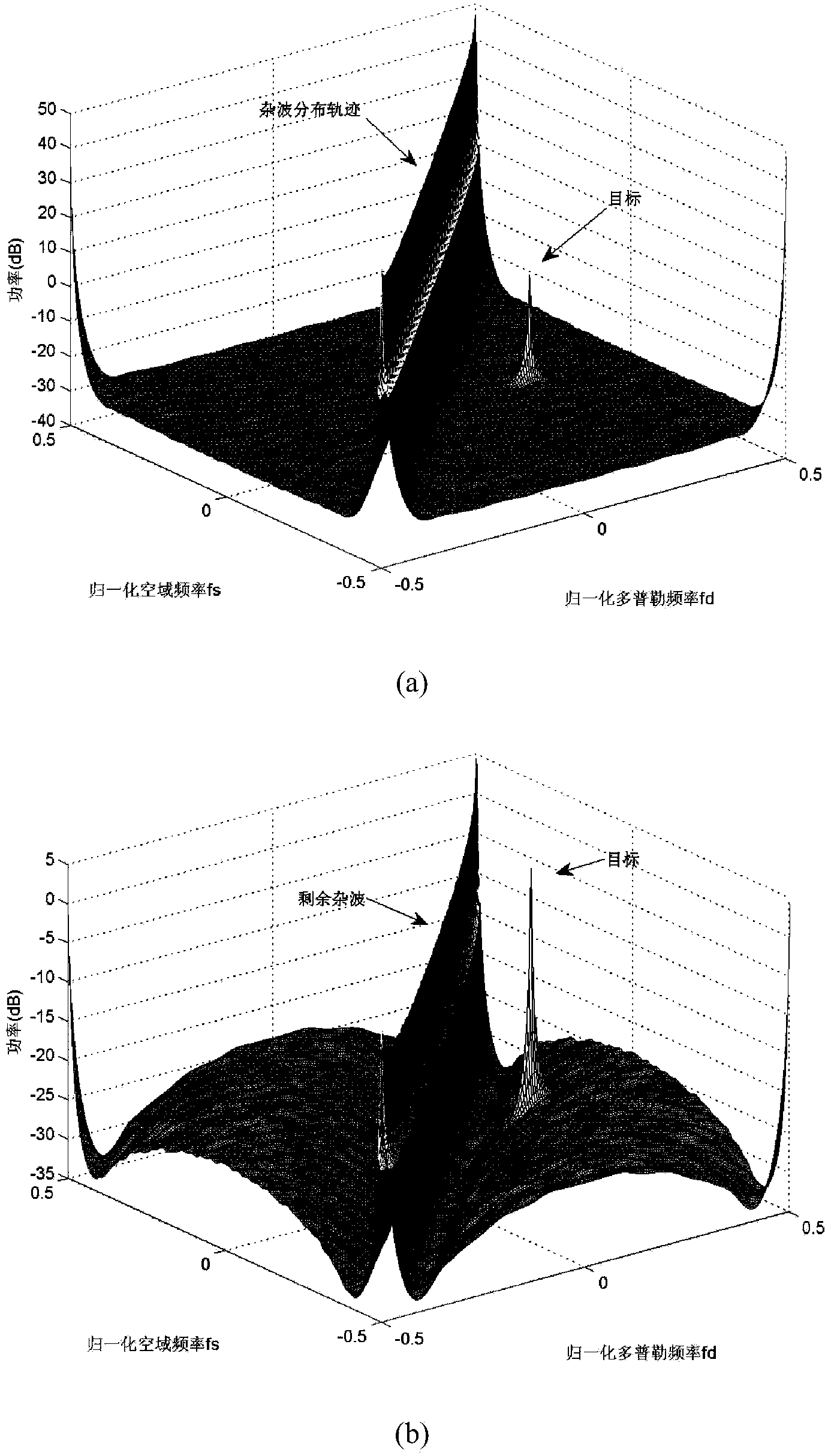Space time code three-dimensional self-adaptation clutter cancelling method for onboard multiple input multiple output (MIMO) radar
An adaptive clutter and clutter canceller technology, applied in radio wave measurement systems, instruments, etc., can solve problems such as good clutter suppression performance, increased computational complexity, and increased number of samples, and achieves good clutter control. The effect of eliminating performance and reducing degrees of freedom
- Summary
- Abstract
- Description
- Claims
- Application Information
AI Technical Summary
Problems solved by technology
Method used
Image
Examples
Embodiment 1
[0081]The present invention has carried out innovation and research aimed at the problem of greatly increasing the degree of freedom of clutter caused by array errors and high computational complexity in clutter suppression in the prior art. The airborne MIMO radar space-time code provided by the present invention The three-dimensional adaptive clutter cancellation method is used in radar signal processing. Airborne early warning radar, because it is set up on a very high platform, has a much farther visual distance to low-altitude flying targets than ground radar, so it has been widely valued. . When the airborne radar is looking down, the ground clutter not only has a wide range and high intensity, but also the clutter in different directions has different speeds relative to the aircraft, which greatly broadens the clutter spectrum. For this reason, the amount of clutter in the airborne radar is much larger than that of ordinary radars, and the traditional clutter suppressio...
Embodiment 2
[0120] Airborne MIMO radar space-time code three-dimensional adaptive clutter cancellation method is the same as embodiment 1, wherein step 2. According to the echo vector model, calculate the residual echo signal energy of two adjacent pulses||ε k || 2 , the specific process includes the following:
[0121] 2.1 According to the signal model of the kth pulse echo of the airborne MIMO radar in formula (3), the echo of the k+1th pulse is obtained as
[0122] x k+1 =[x 0,0,k+1 , x 1,0,k+1 , …, x N-1,M-1,k+1 ] T ,
[0123] 2.2 Perform clutter cancellation on the echo of the k+1 pulse and the echo of the k pulse to obtain the energy of the remaining echo signal||ε k || 2 for
[0124] ||ε k || 2 =||Qx k -x k+1 || 2 ,
[0125] In the formula, Q is the coefficient matrix of the clutter canceller, and ||·|| is the 2-norm of the vector.
[0126] The clutter cancellation processing goal of the space-time adaptive clutter canceller is to optimize the coefficient matrix Q o...
Embodiment 3
[0128] Airborne MIMO radar space-time code three-dimensional adaptive clutter cancellation method is the same as embodiment 1-2, wherein step 3. Minimize residual echo signal energy ||ε k || 2 , to obtain the coefficient matrix Q of the clutter canceller, the specific process includes the following:
[0129] 3.1 The residual echo signal energy ||ε k || 2 minimize, that is, where min represents the minimization function:
[0130] min Q E ( | | ϵ k | | 2 ) = min ...
PUM
 Login to View More
Login to View More Abstract
Description
Claims
Application Information
 Login to View More
Login to View More - R&D
- Intellectual Property
- Life Sciences
- Materials
- Tech Scout
- Unparalleled Data Quality
- Higher Quality Content
- 60% Fewer Hallucinations
Browse by: Latest US Patents, China's latest patents, Technical Efficacy Thesaurus, Application Domain, Technology Topic, Popular Technical Reports.
© 2025 PatSnap. All rights reserved.Legal|Privacy policy|Modern Slavery Act Transparency Statement|Sitemap|About US| Contact US: help@patsnap.com



